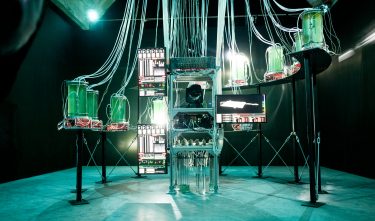What differentiates design research from journalism or scientific research?
I was recently asked this question in a Zoom meeting by design researcher Maxime Benvenuto who is currently carrying out research into… design research. A creative researcher who investigates different kinds of research – it is almost an Ouroboros – the mythological snake eating its own tail.
But in my opinion, that is precisely one of the qualities that design research has over other forms of research; research is more or less open to a designer. Design research is reserved for the most curious and inquisitive out there. It opens Pandora’s box, whereby every question is justified, just like every method. Not only is use often made of ‘other minds’, but there is also plenty of connection with existing knowledge without falling directly into paradigmatic patterns. There is close collaboration, so that the result yields not one clearly defined answer, but a richly varied pattern of possible answers, findings and, above all, new questions.
Where journalism still quite traditionally focusses on proof and truth or on opinions and human interest, and science on empiricism, Popperian verification and falsification, it seems that in connecting with design, both are able to open the door to new, experimental forms of research, with the possibility of other, more hybrid forms of knowledge as a result.
 1
1
Back to Maxime Benvenuto who is carrying out research within the framework of his talent development project, financed by the Creative Industries Fund in combination with a residency established as a collaboration between the Fontys Academy for Journalism in Tilburg and Design Academy Eindhoven. Because his good question is close to my heart, due to my journalistic background and generalist view of the world – or rather because of my deep curiosity and almost insatiable hunger for complex and unusual combinations – but also because I have been working at MU for over 15 years with every possible form of interdisciplinary creative exploration, whereby the entanglement of art and science can no longer be ignored.
To begin with design & science: this month, an independent, international jury will choose the three winners of the annual Bio Art & Design Award, BAD for short, for the tenth time. A prize that not only awards each winning artist/designer 25,000 euro to realise his or her dream project, but also the opportunity to do this in close collaboration with the top-class scientists, knowledge and resources of a Dutch research institute. And every year I am amazed by the enthusiasm and dedication of the participants from both artistic and scientific backgrounds and the far-reaching interest they have in each other’s thoughts and actions. Also because this often results in impressive installations that provide an insight into innovative follow-up research (on both sides and sometimes also together).
There is something similar now emerging in the field of design, journalism & science in a consortium entitled Documenting Complexity [1]. This sees the University of Groningen, the University of Applied Sciences Utrecht, Sound & Vision Hilversum, Worm Rotterdam, MU and Verspers joining forces with a long list of creative makers to explore and critically map out new forms of storytelling, documentary making, art and technology. Supported by NWO, researchers from all three fields bring together their theoretical, practical and creative capabilities in order to sketch collective landscapes and vistas about the future of making and using media.
They have two years’ time for this and it promises to deliver a rich and complex series of stories and visions that would not have come together without the curiosity of all parties involved into each other’s experiences and the largely activist decisiveness in breaking through the persistent systems that dominate our current reality. What connects them all is the will to investigate, to ask questions without expecting unambiguous answers. Biting their own tail, as it were, in order to make the development of their profession and that of their partners not linear, not goal-oriented, but circular. In order to create donuts, to be their own Ouroboros and thereby represent eternal renewal.
[1] The first public presentation of Documenting Complexity will take place on Thursday evening 9 July at MU, with Karen Palmer, Alice Wong, Klasien van de Zandschulp & Natalie Dixon, Foundland and Lana Askari, among others. Those wanting to attend can register via www.mu.nl or follow the livestream that evening from 20:00.
Angelique Spaninks is DDA-jurymember en head of the committee of the category ‘Design Research’.